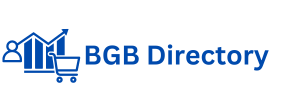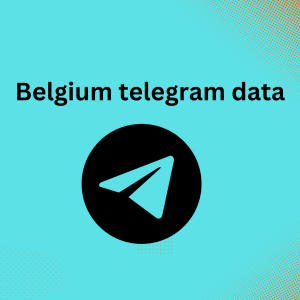Whether you’re a freelancer or an agency offering email marketing services, a well-written email marketing proposal is your ticket to getting new clients. It’s your chance to demonstrate your expertise, describe your approach, and demonstrate the value you bring to the table. A clear, professional proposal sets the tone for a strong working relationship, building trust and confidence with your potential client.
In this article, you’ll find step-by-step instructions on how to create a compelling email marketing proposal and a ready-to-use template.
Why do you need an email marketing proposal?
An email marketing proposal is much more than just a formal document. It serves as a roadmap for your prospect belgium telegram data detailing how your services fit their goals and why you are the best choice for their email marketing needs.
Key Benefits of a Strong Offer
- Demonstrates Expertise : Demonstrates your knowledge of email marketing strategies and tools.
- Meets Expectations : Clearly defines goals, deliverables and deadlines.
- Creates trust : Provides transparency into costs and processes.
- Builds customer trust : Helps customers visualize the impact of your services.
How to Write an Email Marketing Proposal
1. Create a professional cover page
The cover page is the first thing your client will see, so it should be visually appealing and professional. Include:
- Your company name and logo.
- Client name and logo (if applicable).
- Title of the proposal (e.g. “Email Marketing Strategy Proposal for [Client Name]”).
- Submission date.
2. Write a personalized introduction
Your introduction should immediately grab the customer’s attention and show them that you understand their needs. Highlight:
- A brief statement of the client’s objectives.
- Specific challenges they face with email marketing.
- How your experience can help them succeed.
Example : “Dear [Client Name],
Thank you for considering [Your Business] for your email marketing needs. After reviewing your current challenges and goals the phone does not recognize numbers – why and what to do? we created a comprehensive strategy to improve engagement, increase open rates, and boost conversions. Below, you will find a detailed description of our proposed approach.”
3. Determine the client’s goals
Clearly articulate the client’s goals, demonstrating that you understand their priorities. Common goals for email marketing campaigns include:
- Increase the number of emails opened and links clicked.
- Driving traffic to specific landing pages.
- Increase sales or registrations with targeted campaigns.
- Strengthening brand loyalty and customer retention.
4. Describe your email marketing strategy
This section should explain how you plan to achieve the client’s goals. Be specific and include details such as:
- Target Audience : Describe the demographic characteristics and behavior of the target audience.
- Campaign Types : Describe the types of emails you will send (e.g. newsletters, promotional emails, drip campaigns ).
- Strategy Content : Detail the messages, tone, and themes you will use.
- Automation and Segmentation : Explain how you will use segmentation and automated workflows to personalize content.
- Performance Tracking : Describe the metrics you will track, such as email open rates, click-through rates, and conversion rates.
5. Specify services and results
List the specific services and tangible results you will provide. Examples include:
- Development strategy.
- Custom designed email templates.
- Creating content for campaigns.
- Performance tracking and analytics reports.
- A/B testing of themes and layouts.
Clearly defining the deliverables ensures that both parties have the same understanding of what is included in the project.
6. Ensure transparent pricing
Provide a detailed price breakdown to help the client understand your fees. Include costs for each service or stage of the project, such as:
- Strategy Development: $X
- Template design: $X
- Monthly Campaign Management: $X
- Analytics and reporting: $X
Consider offering tiered pricing or packages to give customers flexibility depending on their budget.
7. Include a timeline and milestones
Show the client how the project will develop by breaking it down into phases. Provide realistic timelines for key milestones, such as:
- Week 1: Adaptation and Strategy Development.
- Week 2: Create an email template and approve content.
- Week 3: Launch your first campaign.
- Current: Monitoring and optimizing campaigns.
Clear deadlines convince the client that you are organized and focused on results.
8. Highlight your experience
Build trust by demonstrating your experience and past successes. Include:
- Examples of successful email campaigns you have run.
- Relevant metrics such as email open rates aol email list conversion rates, or ROI.
- Reviews or examples from the practice of satisfied clients.
This section enhances your reputation and positions you as the best candidate for the job.
9. End with a call to action
Conclude your proposal with clear next steps. Encourage the client to take action, such as scheduling an appointment, asking questions, or signing the proposal, to move forward.
Example : “We are excited to work together and look forward to helping you achieve your email marketing goals. If you have any questions or need adjustments, please don’t hesitate to reach out. When you’re ready to move forward, simply sign the attached agreement and we’ll get started right away.”
Common Mistakes to Avoid When Writing an Email Marketing Proposal
Creating an effective email marketing proposal requires attention to detail and a clear understanding of the customer’s needs. Unfortunately, several common mistakes can reduce the impact of your proposal and make it less attractive to potential customers. Here are some of these pitfalls and actionable tips on how to avoid them.
1. Uncertain results
One of the most common mistakes in email marketing proposals is not clearly defining what you will deliver. Uncertainty about the scope of work can lead to miscommunication, mismatched expectations, and dissatisfaction later in the project.
Example of undefined results:
- “Create email campaigns” without specifying the number of campaigns, their purpose, or the content included.
How to avoid this:
- Be as specific as possible when describing your results. For example:
- “Develop five email campaigns over two months, each including one custom-designed template and three rounds of refinement.”
- Use bulleted or numbered lists to make results clear and measurable.
2. Unclear pricing
Customers need to understand exactly what they are paying for. If your prices are vague or overly complicated, it can create confusion and turn off potential customers.
An example of unclear pricing:
- “Pricing will depend on the scope of the project” without providing a specific breakdown or examples.
How to avoid this:
- Include a detailed pricing section with a clear breakdown of the costs for each service, such as:
- Strategy development: $500
- Email Template Design: $200 per template
- Monthly Campaign Management: $1,000
- Offer tiered packages where appropriate, allowing customers to choose a plan that fits their budget.
3. Lack of personalization
A generic offer that doesn’t address a customer’s specific needs or goals can come across as lazy or uncaring. Customers want to feel like you understand their unique challenges and offer tailored solutions.
An example of lack of personalization:
- Reusing the same proposal template without tailoring it to the client’s brand, industry, or goals.
How to avoid this:
- Research the client’s business, industry and competitors.
- Mention specific problems or goals they shared in the Introduction or Goals section.
- Use examples or case studies relevant to your industry to show that you have successfully worked on similar projects.


